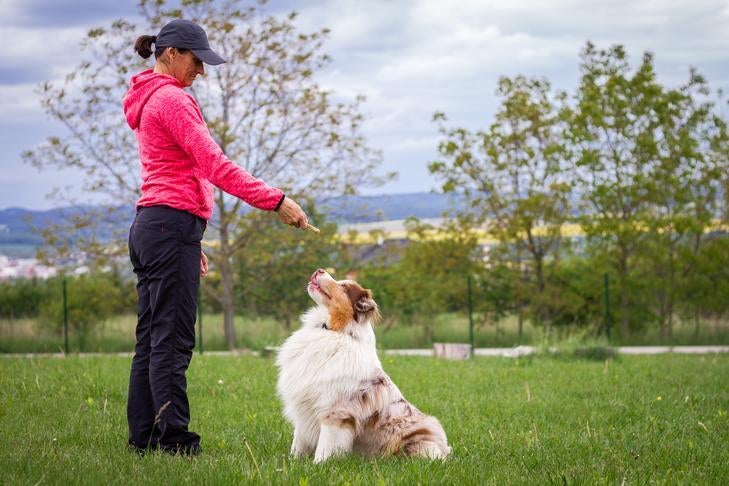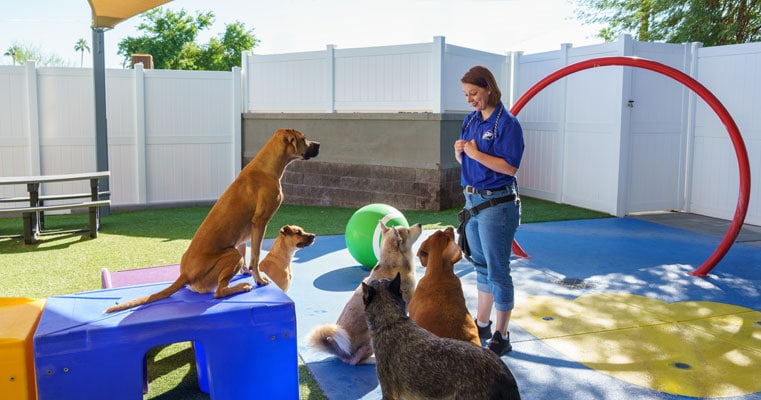How Professional Dog Training Can Enhance Your Dog’s Skills and Behavior
Beginner's Overview to Successful Pet Training in your home
Efficiently training a pet in the house calls for a nuanced understanding of canine habits and efficient communication strategies. Establishing clear training objectives, making use of top quality benefits, and maintaining consistency across relative are critical elements. Integrating training right into daily routines can improve both interaction and retention. Nevertheless, several novice fitness instructors encounter difficulties that may prevent progress. To browse these intricacies properly, it's important to explore a number of essential elements that can change your approach and cause an unified connection with your pet dog. What basic principles should every newbie grip to guarantee success?
Understanding Canine Habits
Comprehending pet dog habits is essential for reliable training and cultivating an unified partnership between human beings and their canine friends. Pet dogs connect mostly with body language, vocalizations, and faces, making it critical for owners to interpret these signals properly. Identifying actions such as tail wagging, grumbling, or shrinking can offer insights into a canine's psychological state and intentions.

Usual behavior issues, such as hostility, anxiety, or too much barking, usually originate from misconceptions or unmet demands. Observing and resolving these issues quickly can avoid rise and make certain a favorable training experience. By fostering a deep understanding of canine habits, proprietors can customize their training techniques to match their canine companions, eventually resulting in a mannerly and happy family pet.
Essential Training Devices
A well-equipped training area can dramatically improve the effectiveness of canine training in the house. Essential training tools ensure that both the dog and the trainer can participate in effective sessions that cultivate discovering and bonding.

Purchasing a strong leash and a comfortable, well-fitting collar or harness is crucial for safety and control. These devices help develop borders and make sure the dog remains safe and secure during training. In addition, a marked training location, without diversions, aids concentration for both the fitness instructor and the dog.
Educating help such as training pads, cones, or dexterity equipment can additionally enhance the experience by introducing variety and obstacles. Having a notebook or electronic application for tracking development can be vital, enabling you to keep in mind successes and locations for improvement. Making use of these vital tools will develop a positive training setting and lay the structure for reliable knowing.
Developing an Educating Routine
Developing a constant training routine is necessary for reliable canine training in your home. A well-structured regular not only aids in reinforcing wanted habits however likewise supplies your pet with a feeling of safety and security and predictability. To create an efficient training regular, begin by determining details training objectives, hop over to here such as standard commands, chain walking, or housebreaking.
Choose a designated time each day for training sessions, ideally when your canine is receptive and alert. Procedure needs to be brief, about 5 to 15 minutes, to preserve focus and avoid tiredness. Uniformity in timing and setting will certainly improve your canine's knowing experience.
Incorporate training into everyday tasks to strengthen abilities. For instance, technique commands throughout walks or mealtime, which integrates discovering check over here into all-natural routines. Additionally, stay flexible and adjust the routine as needed, accommodating your dog's power levels and mood.
Positive Support Techniques
Positive support techniques are basic to efficient canine training, advertising desired actions through incentives as opposed to penalty. This technique makes use of favorable stimulations, such as treats, appreciation, or playtime, to urge canines to repeat particular actions. The cornerstone of this strategy is timing; rewards need to be given instantly following the desired behavior to develop a clear organization.
When executing favorable support, it is vital to select rewards that are inspiring for your pet. High-value treats, such as tiny pieces of hen or cheese, can be particularly efficient throughout training sessions. Furthermore, differing the rewards can preserve your pet's interest and enthusiasm.
Start with basic commands, like "sit" or "remain," and slowly progress to more complicated jobs. Uniformity is crucial; ensure that all relative use the same commands and benefit systems to stay clear of complication.
Furthermore, it is vital to remain individual and prevent aggravation. Canines, like people, learn at their very own rate. By fostering an encouraging training setting through positive reinforcement, you can enhance your canine's knowing experience while strengthening the linked here bond in between you and your furry companion, preparing for successful training end results.
Usual Educating Challenges
While training a dog in the house can be a rewarding experience, it usually comes with a set of usual challenges that can check both perseverance and consistency. One common issue is interruption. Dogs may become easily averted by noises, motions, and even scents in their environment, making it tough to keep their emphasis during training sessions.
One more difficulty is variance in commands and reinforcement. It can prevent and puzzle the dog development if household participants use different hints or benefits. Establishing a unified approach is important for efficient communication.
Additionally, pets can experience disappointment or anxiety, specifically if they do not understand what is anticipated of them. This can lead to undesirable habits, such as barking or eating.
Finally, the timing of reinforcement is important (Dog training). Postponed incentives can diminish the performance of positive support, as canines may fall short to attach the actions with the incentive
Conquering these obstacles needs dedication, clear interaction, and an organized training plan. Identifying and resolving these usual barriers will pave the means for a more effective and satisfying training experience at home.
Conclusion
In verdict, successful canine training at home requires an extensive understanding of canine actions and effective interaction approaches. By establishing clear training objectives and using top quality treats together with favorable support, the training procedure comes to be a lot more gratifying for both the canine and the trainer.
Developing a regular training routine is crucial for efficient dog training at home.Favorable reinforcement strategies are fundamental to effective pet dog training, promoting desired habits via benefits rather than penalty (Dog training). By promoting a supportive training setting with positive support, you can improve your pet dog's learning experience while strengthening the bond between you and your hairy buddy, laying the foundation for successful training end results
In verdict, successful pet dog training at home necessitates a thorough understanding of canine habits and effective interaction techniques. By establishing clear training objectives and making use of top notch deals with together with favorable support, the training process becomes much more satisfying for both the fitness instructor and the dog.